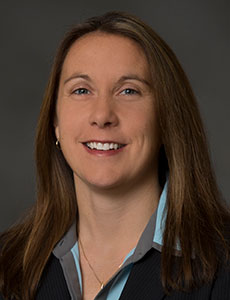Sponsored Content by One Call
Driving Value in Workers’ Compensation with Evidence-Based Medicine

Among developed nations, the U.S. falls near the bottom of the rankings in terms of health care efficiency.
“We spend more money, but don’t necessarily see better results,” said Kim Radcliffe, Senior Vice President, Clinical Operations at One Call. “Excessive care and unnecessary diagnostic testing drives up utilization costs without producing real benefit to patients.”
Evidence-based medicine can help flag unnecessary care, delivering better clinical outcomes at a lower cost. For workers’ compensation payers, achieving efficiency is vital to keeping claims costs in check while getting injured workers back to health as quickly as possible.
States that have adopted and enforced Official Disability Guidelines (ODG) — one of the most well-recognized evidence-based guidelines in the industry — offer real world validation that this approach eliminates costs while maintaining quality of care.
Since Texas adopted ODG in 2007, they have reduced lost-time by 34 percent, dropped medical costs by 30 percent, and subsequently decreased workers’ comp insurance premiums by 51 percent.
The Ohio Bureau of Workers’ Compensation also reduced claim duration and medical costs by more than 60 percent within one year of implementing ODG in 2004. In addition, they decreased treatment delays for the top 30 workers’ comp conditions by 77 percent.
Several other states saw notable improvements, including North Dakota, Kansas, Oklahoma and California, since adopting ODG.
“States that do not enforce evidence-based guidelines via a formal utilization review process often have significantly higher utilization and per-unit costs — and often don’t achieve the same level of outcomes as states that utilize a formal program,” Radcliffe said. “There is a lack of consistency in how evidence-based guidelines are enforced among those states with no formal UR rules.”
Employers in states that do not require utilization review or adherence to evidence-based guidelines can still apply the approach and reap its benefits. But it requires working with the right care management partner.
Case Study: Physical Therapy Interventions

Kim Radcliffe, Senior Vice President, Clinical Operations, One Call
Vendors with expertise in both clinical care and workers’ compensation can drive value for their clients by getting involved directly with patient care. One Call leverages its expertise in evidence-based medicine to work at a peer level with clinicians. Evidence-based guidelines provide a roadmap for that process, setting triggers and benchmarks that help steer care down the most efficient path. Doing so not only restores workers back to health faster, but also keeps costs in line for employers.
One injured worker’s recovery journey offers an example.
After surgery for a total knee replacement, the patient received a referral for a high-end in-patient rehabilitation center. That set off one red flag.
“A referral for high-end rehab is a trigger under the guidelines. Such facilities can be very expensive, and aren’t always necessary when a skilled nursing facility is available and can achieve the same results, for a much lower cost,” Radcliffe said.
One Call’s team intervened and got the patient into a skilled nursing facility instead, saving the payer “tens of thousands of dollars.” They worked directly with nursing staff to establish a one-week timeline and monitored his progress throughout. At the end of the week, all agreed he was ready for discharge.
Then came the second red flag.
The treating physician referred the patient for home health physical therapy visits, but guidelines establish that outpatient therapy is preferable whenever possible.
“We moved him straight to outpatient therapy, which not only saved costs, but also shortened his care timeline,” Radcliffe said.
At the end of the prescribed 16 PT visits, the patient received a second referral for more care.
“A second prescription for PT always triggers a review to determine whether or why the first prescription was not enough,” Radcliffe said. After connecting with the treating therapist and reviewing the patient’s progress, they reached a consensus that more care was not warranted.
“Our guidelines dictate treatment only when it is medically necessary and beneficial,” Radcliffe said. “In this case, it was clearly not necessary, and it would not bring the patient any added benefit.”
Ultimately, the patient was able to return to work two to three weeks sooner due to the interventions and redirection of his care, and the payer saved a total of $68,000.
Gaining Provider Trust by Focusing on Patient Needs
Ultimately, enforcing evidence-based guidelines in jurisdictions that have not formally adopted them is impossible without provider buy-in. Establishing open communication channels earns that buy-in and enables faster claims closure without compromising the quality of care. Communication with clinical care providers is critical to applying evidence-based medicine.
Without oversight, some doctors have a tendency to prolong treatment. From a purely clinical perspective the thought is that more care and attention can’t hurt.
That desire to do what is best for the patient is exactly where providers, payers, claims managers, and of course, patients, can find common ground. The key is to establish a collaborative relationship that considers input from the appropriate parties.
“The best way to implement evidence-based medicine in workers’ comp is through direct peer-to-peer calls, rather than formal utilization review. If we see a red flag, we never recommend a change in the care plan until we have attempted to reach the treating provider,” Radcliffe said.
“That communication is generally well-received, and it increases the provider’s sense of accountability.”
At the heart of evidence-based medicine is a focus on the needs of the patient.
“Doing the right thing for the patient benefits everyone in the long term,” Radcliffe said. “Our culture at One Call is to take a patient-centric approach and make sure the care plan is one that will get them back to a normal life faster. This approach benefits their employer as well.”
An Expert Partner in Clinical Care
An expansive network of medical providers enables One Call to deliver services on a broad scale across the full spectrum of care. One Call determines a quality provider based on their outcomes and utilization record and directs care to the highest quality providers when possible. A commitment to building relationships and earning the trust of providers also facilitates the review process and making adjustments to treatment plans.
With more than 200 on-staff licensed physical therapists, occupational therapists, certified hand therapists, chiropractors, nurses and dental professionals, One Call’s clinical specialists can engage directly with providers and communicate about clinical issues clearly and effectively.
“A high-level of clinical coordination and in-house clinical expertise is what drives our process,” Radcliffe said. “We focus on what is appropriate and when for a specific injury. Through our Gold Standard Review process, we can identify when an approach isn’t working and use clinical pathways to find a better approach.”
“We can fill in the gap for states that have not formally adopted evidence-based guidelines or utilization review procedures. In states that have, we help them execute it.”
Ultimately, this level of clinical oversight helps to create a consistent level of care for workers’ compensation patients — no matter what jurisdiction they live in.
To learn more about One Call’s services for the workers’ comp industry, visit http://onecallcm.com/.
This article was produced by the R&I Brand Studio, a unit of the advertising department of Risk & Insurance, in collaboration with One Call. The editorial staff of Risk & Insurance had no role in its preparation.









